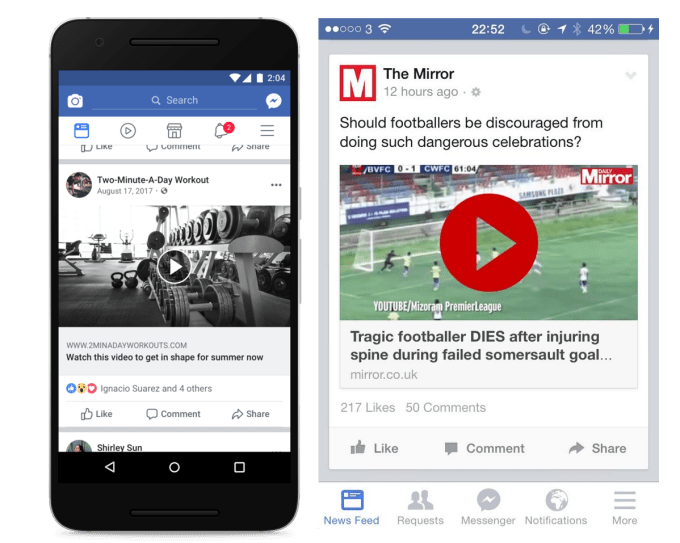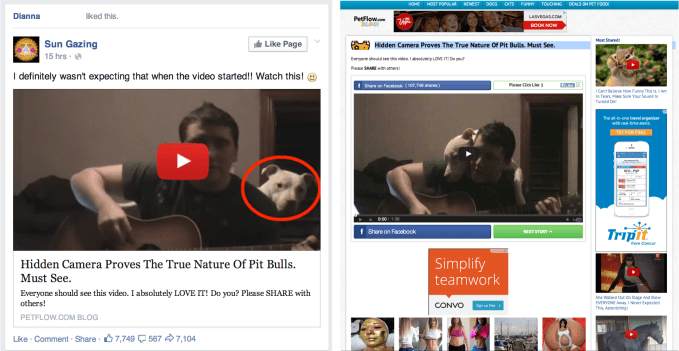Facebook downranks video clickbait and fake play buttons

Ever gotten tricked into clicking a fake play button on Facebook that opens a link instead of starting a video? I did, repeatedly, and wrote a story in 2014 titled “Yo Facebook, Ban Links With Fake Video Play Buttons”.
Now Facebook is doing just that. Today it started downranking the News Feed presence of links that display a fake play button in the preview image, as well as videos that are actually just a static image uploaded as a video file. Publishers who use these scammy tactics will see a major decrease in the distribution of these stories. Facebook won’t completely delete these posts, though, unless they violate its other policies.
Here are two examples of fake play buttons that spammers used to steal your clicks:

Facebook has prohibited the use of fake play buttons in advertisements under its policy against depicting non-existent functionality for a few years, News Feed Product Manager Greg Marra tells me. But the scourage has remained in the News Feed.
“We’ve heard from people who are frustrated by fake play buttons” Marra says, hence today’s update. “Spammers are using these tactics to trick people into clicking links to low quality web pages.Facebook tells me its now training its machine vision artificial intelligence to classify and detect fake play buttons in preview images.
“While the prevalence is statistically low, the frustration expressed by people who use Facebook who encounter these deceptive practices is high” a spokesperson tells me.
Facebook says that if publishers want to denote there’s a video behind a link, they should indicate that through Open Graph meta tags. They could also use words like “Watch” or “Video” in the headline or description.

Fake video play buttons in News Feed link previews like the one on the left can mislead people into clicking out to ad-covered sites as shown on the right.
Facebook has had a similar problem with publishers looping pre-recorded videos and calling them live, or just putting up a computer graphic countdown and calling it Live. TechCrunch called on Facebook to ban these shenanigans back in January, and it cracked down on them in May.
There’s also been the issue of publishers putting fake Instant Articles “Lightning Bolt” icons on the preview images of links to non-Instant Articles on the standard web. That’s because people are more likely to click Instant Articles since they load faster.
Meanwhile, Facebook’s emphasis on video in News Feed has inspired the new menace of publishers uploading a static image as a video to get more eyeballs. These static image videos will be downranked too. Facebook is using a “motion scoring” system that detects movement inside a video to classify and demote these clips.

Today’s changes come as part of a massive, multi-pronged atack on clickbait. Facebook now downranks headlines that are misleading or withhold information in many languages, shows fewer links overshared by spammers, works with outside fact checkers to demote false news, promotes iand now shows Related Articles with different angles to make people suspicious of exaggerated clickbait.
With each of these updates, Facebook chips away at the clickbait problem, leaving more room in the News Feed for legitimate content. Getting burned by trying to watch a video which is just endless minutes of the same image erodes trust in the News Feed, making people less likely to watch videos in the future.
By excising these annoying experiences, users may be willing to browse longer, view more videos from friends and publishers, and watch lucrative video ads that fund Facebook’s soaring profits.